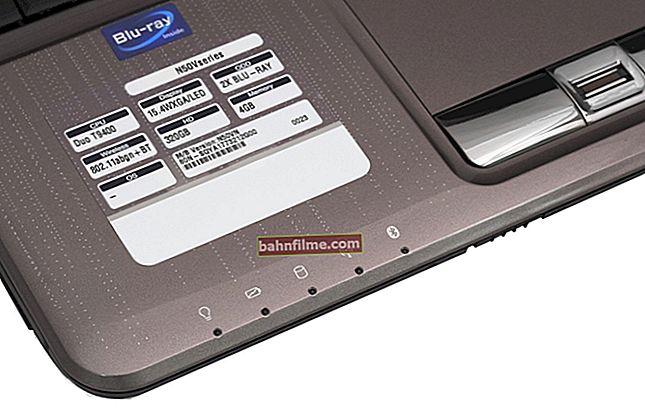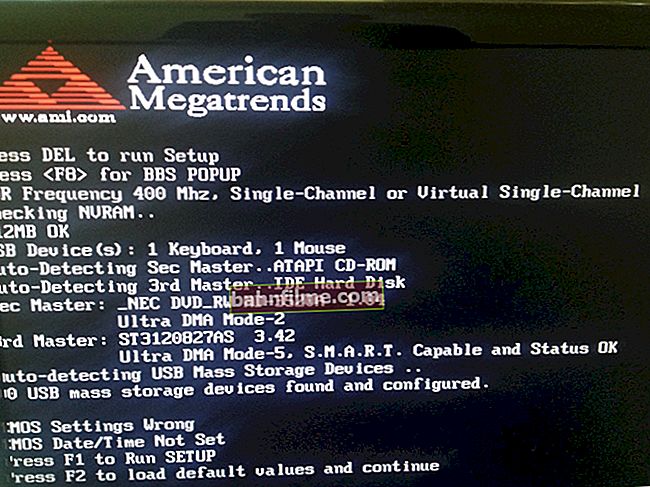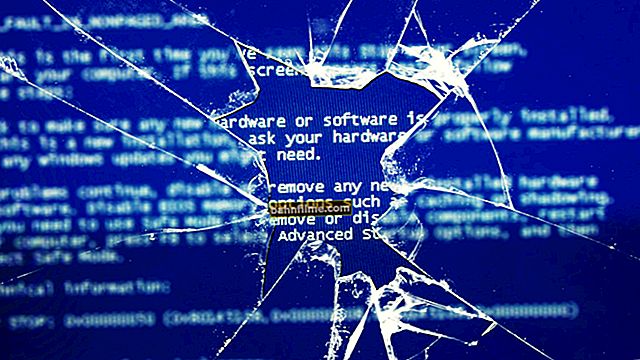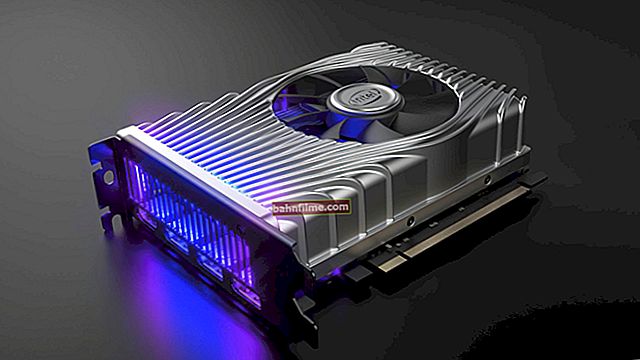 Good day!
Good day!
ASUS notebooks are among the leaders on the market today (good value for money). Well, since they are in demand, there are always enough questions about them ...
In today's article I want to touch on one of them - namely, entering the BIOS (or UEFI on newer device modifications). Most often, this must be done to boot from an installation flash drive (for example, to update / install Windows OS), to disconnect some devices, view the model of components, etc.
Approx. : The article is replete with explanatory screenshots. Some of the details that you see on the screenshots may differ slightly from yours, depending on the software version of your device (but all steps will be the same for laptops of this brand).
*
3 ways to enter BIOS / UEFI on ASUS laptops
Method 1
- Turn off your laptop first;
- Then hold down the F2 button;
- Without releasing the F2 button, turn on the device;
- Do not release the F2 button until the main BIOS / UEFI page appears.

Method 1 - hold down F2 and turn on the laptop
Note: instead of "holding down" the F2 key, you can often press it immediately after turning on the laptop. The action will be similar, you should also see the main BIOS settings page.
As for the choice of media to boot, you need to open the section "BOOT" (boot). Below I will consider the 2 most popular software options.
On newer ASUS laptops, UEFI is used instead of BIOS: there are several links at the bottom of the screen - click on "Advanced Mode (F7)" (you can also press F8 to select a medium, a boot menu will open, where you can select all available drives to boot).

Advanced Mode F7 (alternative settings). Clickable. ASUS laptop
In the subsection "BOOT" in the line "Boot Option # 1" you can select and specify the media from which you want to boot. After changing the settings, do not forget to save them (F10 key or select "Save and Exit" from the menu (ie, save the settings and exit)).

Choosing bootable media
In older laptops, you will find the usual BIOS: here you can immediately open the BOOT section and specify the required drive (USB flash drive) in the "Boot Option # 1" line. Saving the settings also by pressing the F10 key.

Selecting bootable media (ASUS)
Method 2
This method is somewhat different from the first: the fact is that we will not open the BIOS itself, but the boot menu: from it you can quickly select the USB flash drive or disk from which you want to boot (very convenient, and you do not need to change any BIOS settings).
Note that the boot menu also contains a link to enter the BIOS. So, if you have a problem with the F2 key, try using ESC!
- The first step is also to turn off the laptop;
- Then we hold down the ESC key;
- Without releasing ESC, turn on the laptop;
- We hold the ESC key until the boot menu appears in front of us.

Method 2 - hold down the ESC key and turn on the laptop
The boot menu is a simple list of devices (disks, flash drives, etc. drives) from which you can boot.
In my example below, there are 3 lines:
- Windows Boot Manager is a boot of the installed Windows OS;
- Power Plus - boot from USB flash drive;
- Enter Setup - enter BIOS / UEFI settings.

Choosing a boot option
Method 3: for Windows 10 users
If the previous methods did not work for you (for example, in case of problems with the keyboard, this may be the case), then you can resort to others. Here are a couple of options for those using the modern Windows 10 operating system.
Option 1
- Open the START menu / Options;
- Then the section "Update and Security";
- This section should have a "Recovery" tab;
- Look for the heading "Special Boot Options" and click the "Restart" button.

Special boot option
After the device restarts, a blue screen will automatically pop up with special boot options. Choose an option "Troubleshooting" , and then "Extra options" ... See below for screenshots.

Choice of action - diagnostics (clickable)
Then select the option "UEFI Firmware Options" - and agree to reboot.

Advanced options (login to UEFI)
Next, you will automatically open the main UEFI / BIOS settings page.
Option 2
- Press the button combination WIN + R;
- In the pop-up window "Run" enter command powercfg.cpl ;
- This should open the Power Options preferences window: from the menu on the left, select the "Action of the power buttons" option.

Control Panel-Hardware and Sound-Power Supply
Next, click the link at the top of the screen "Changing parameters that are currently unavailable" (see screenshot below).

Changing options that are currently unavailable
Now the shutdown parameters should become active: you must uncheck the "Enable Fast Startup" checkbox. Then save your settings and restart your laptop.

Disable Fast Startup
After rebooting, you will see a blue screen with several options: press option "Select other options" , or immediately "Troubleshooting" if such a download option is immediately available (See two screenshots below).

Parameters

Troubleshooting
Next, in the "Diagnostics" section, select the "Advanced Settings" subsection.

Extra options
And then the option "UEFI Firmware Options".

UEFI Firmware Options
Agree to reboot. After that, the laptop itself will automatically open the main page (Main) of the BIOS settings.

Reboot (after which the laptop will automatically open the UEFI / BIOS main page)
That, in fact, is all. I hope one of the options will definitely work for you ...
*
Add-ons are, as always, welcome ...
That's all, good luck everyone!









